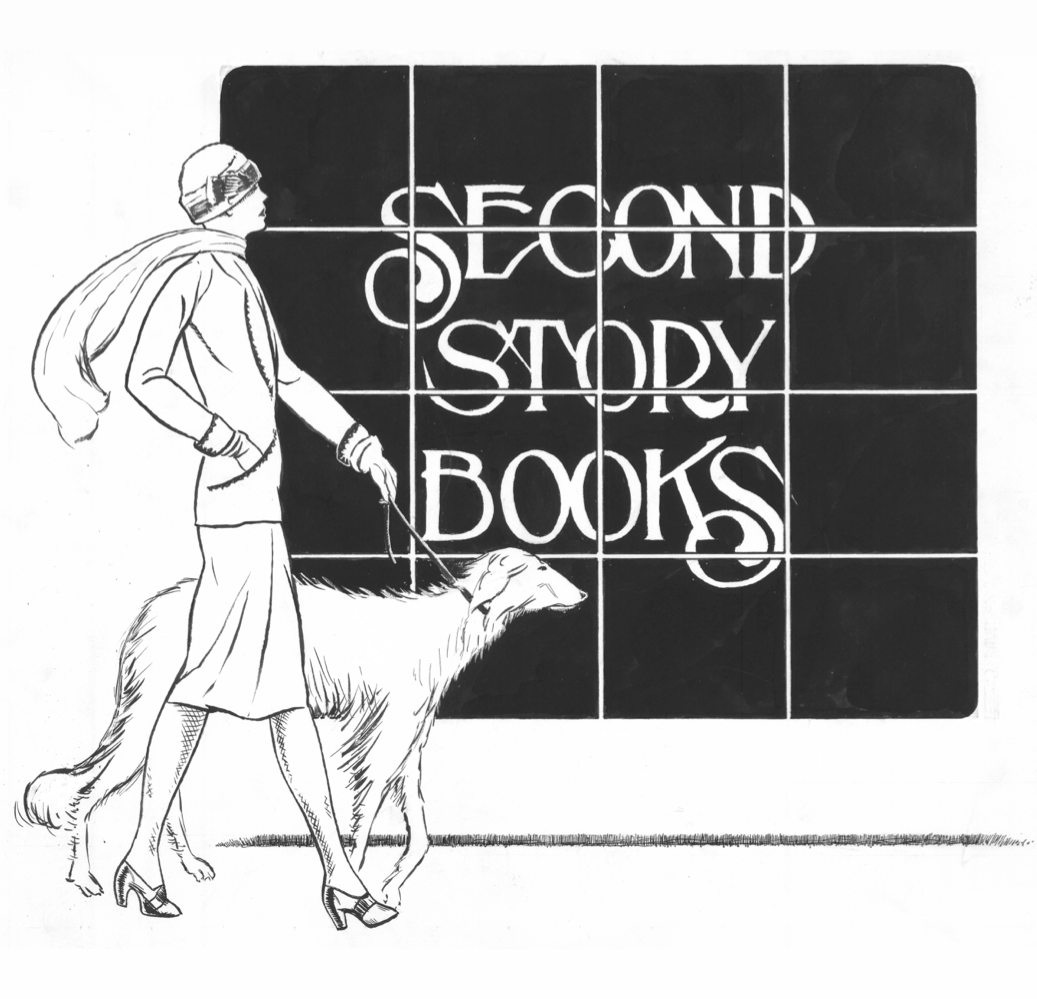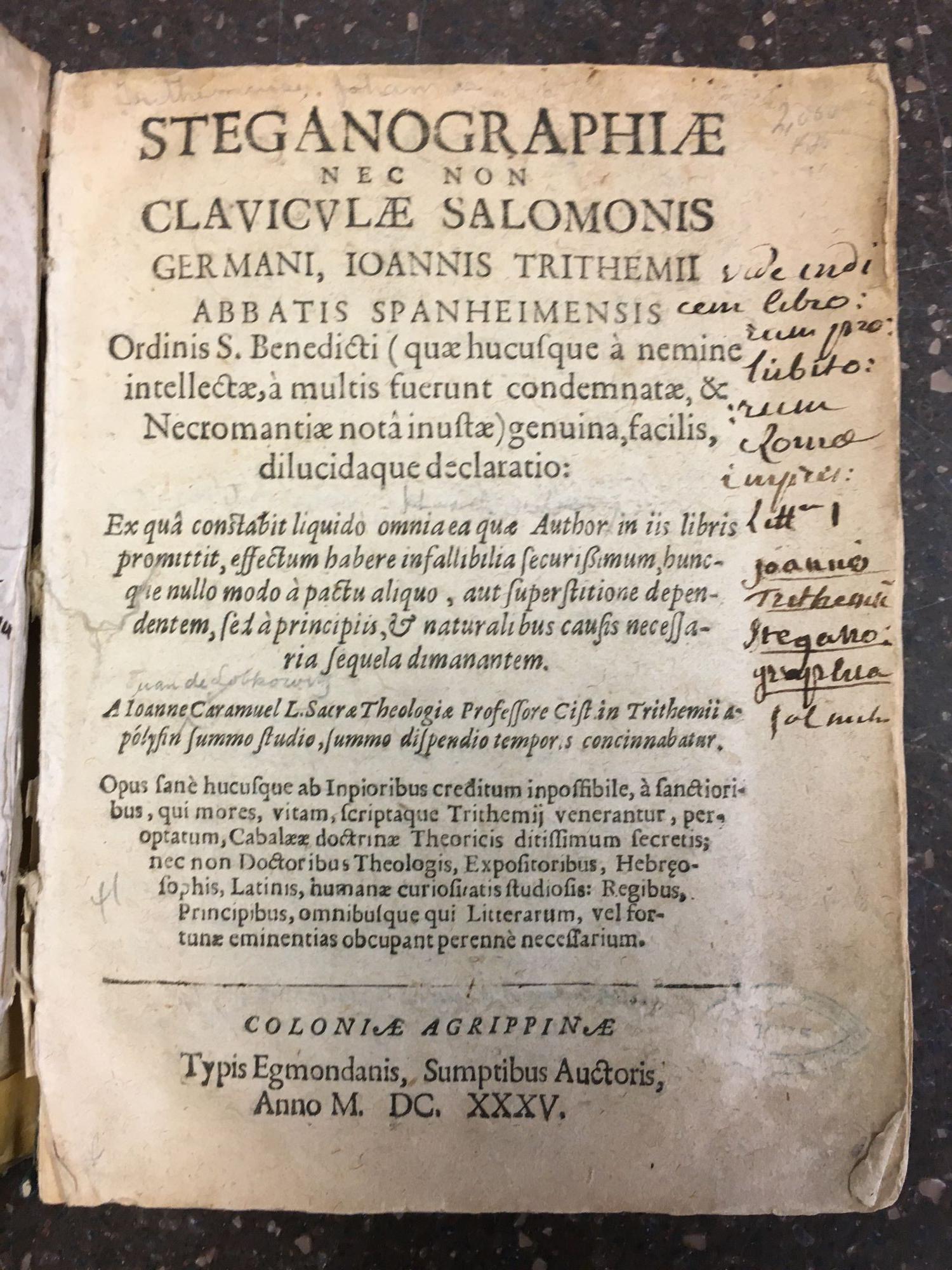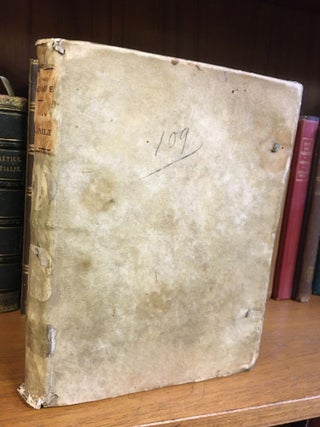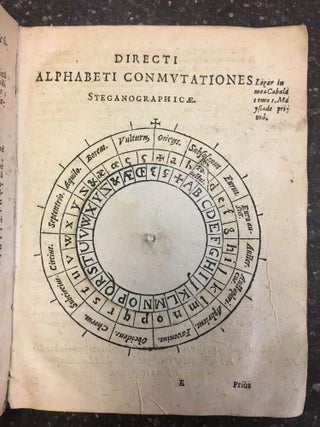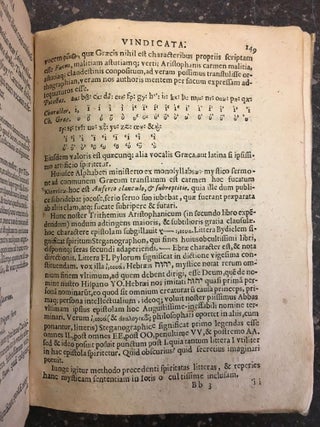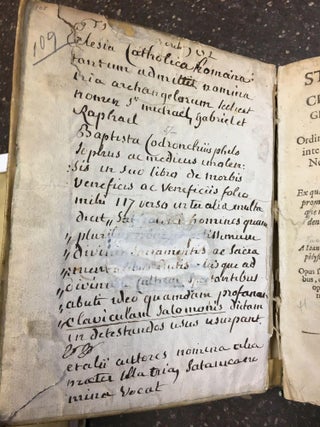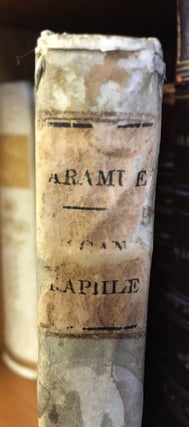STEGANOGRAPHIAE NEC NON CLAVICULAE
Coloniae Agrippinae: Typis Egmondanis, Sumptibus auctoris, 1635. Quarto, [48], 158 pages; VG; bound in full contemporary vellum, paneled spine with paper label and black titling;
ex-library markings, including removed stickers from spine, small removed bookplate to front pastedown, small faded stamp to title page, pencil notations on verso of title page; '109' in pencil written to front board, front pastedown; front pastedown covered in early ink writing; marginalia and underlining present almost exclusively during the introduction and title page.; lacking ffep; front gutter visible at title page, still firmly attached;
Includes volvelle on E1 recto, presumed slightly later than publication due to paper;
extremely scarce; shelved case 3.
1333985
Shelved Dupont Bookstore
Sold
NOTES
The text of book 1 of the Steganographia, with an introduction as well as a commentary to each chapter. The first edition of Caramuel y Lobkowitz's defense of Trithemius's Steganographia against charges of black magic and necromancy.;
Caillet 10855;
Begun in 1499, the Steganographia was only published in 1606. Books one and two, while disguised, were fairly straightforward systems for encoding messages and one of the first books written on cryptography. The third book, however, was full of occult references of angels, spirits and astrological signs and was believed to be a grimoire.
>br>
"Book One describes the spirits of the air, which are difficult and dangerous because of their arrogance and rebelliousness. Book Two covers the spirits of each hour of the day and night, while Book Three deals with operations with the angels and spirits of the seven planets." [Nicholas Goodrick-Clarke]
"At first glance, the text seems to be about astrology and obscure ‘magical’ ideas. It was claimed that, amongst other things, it contained a method of sending secret messages over great distances. It includes long essays about various spirits and angels, with rituals and tables of ‘magical’ formulae. However, it turns out that there is nothing ‘magical’ about them. The lists of numbers and letters are in fact the key to a clever form of encryption that was only discovered in the 1990s. It appears that Johannes Trithemius had invented a primitive form of the same system of encryption that was used later to create the famous Enigma code during WWII. " [The National Library of Wales]
